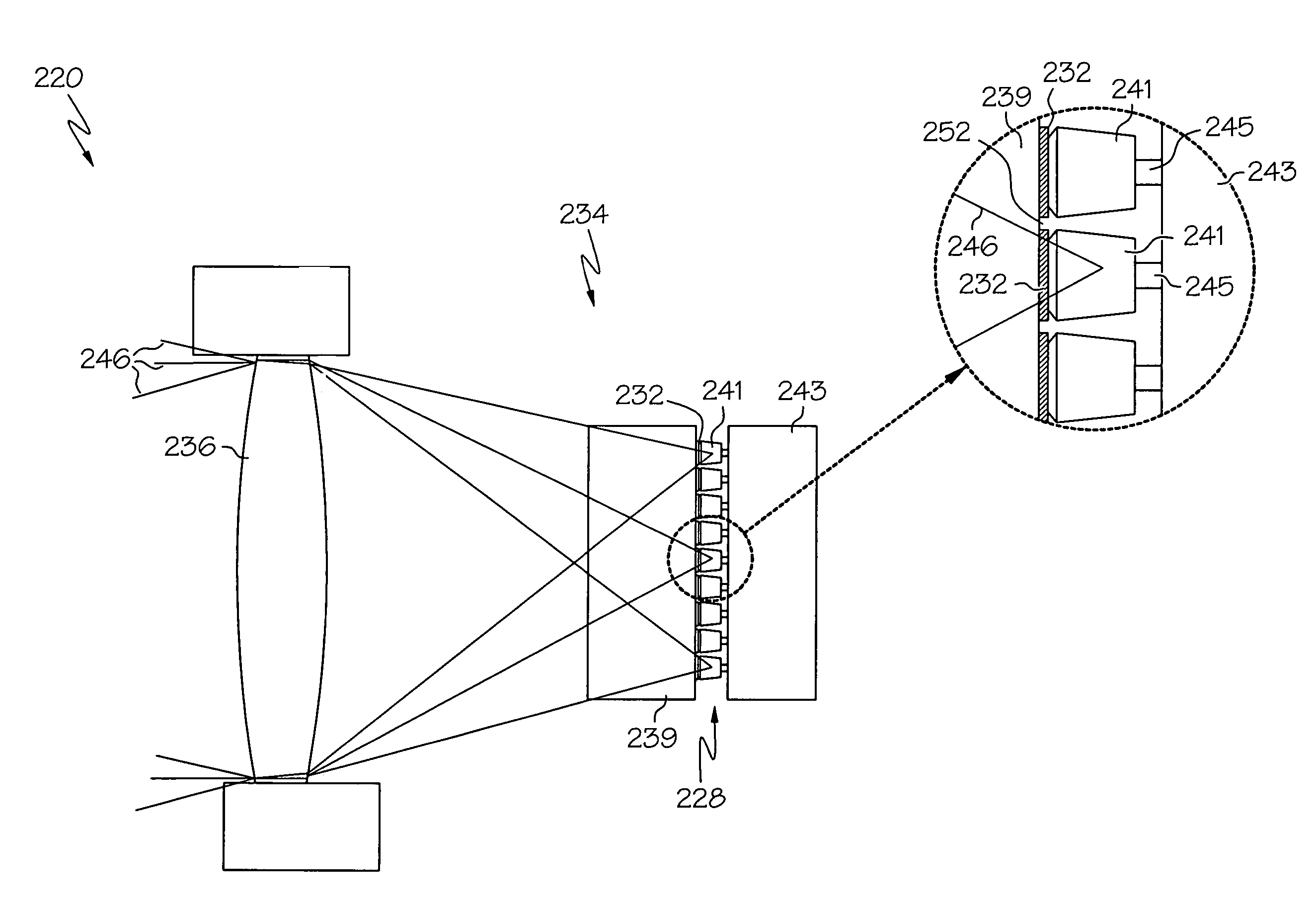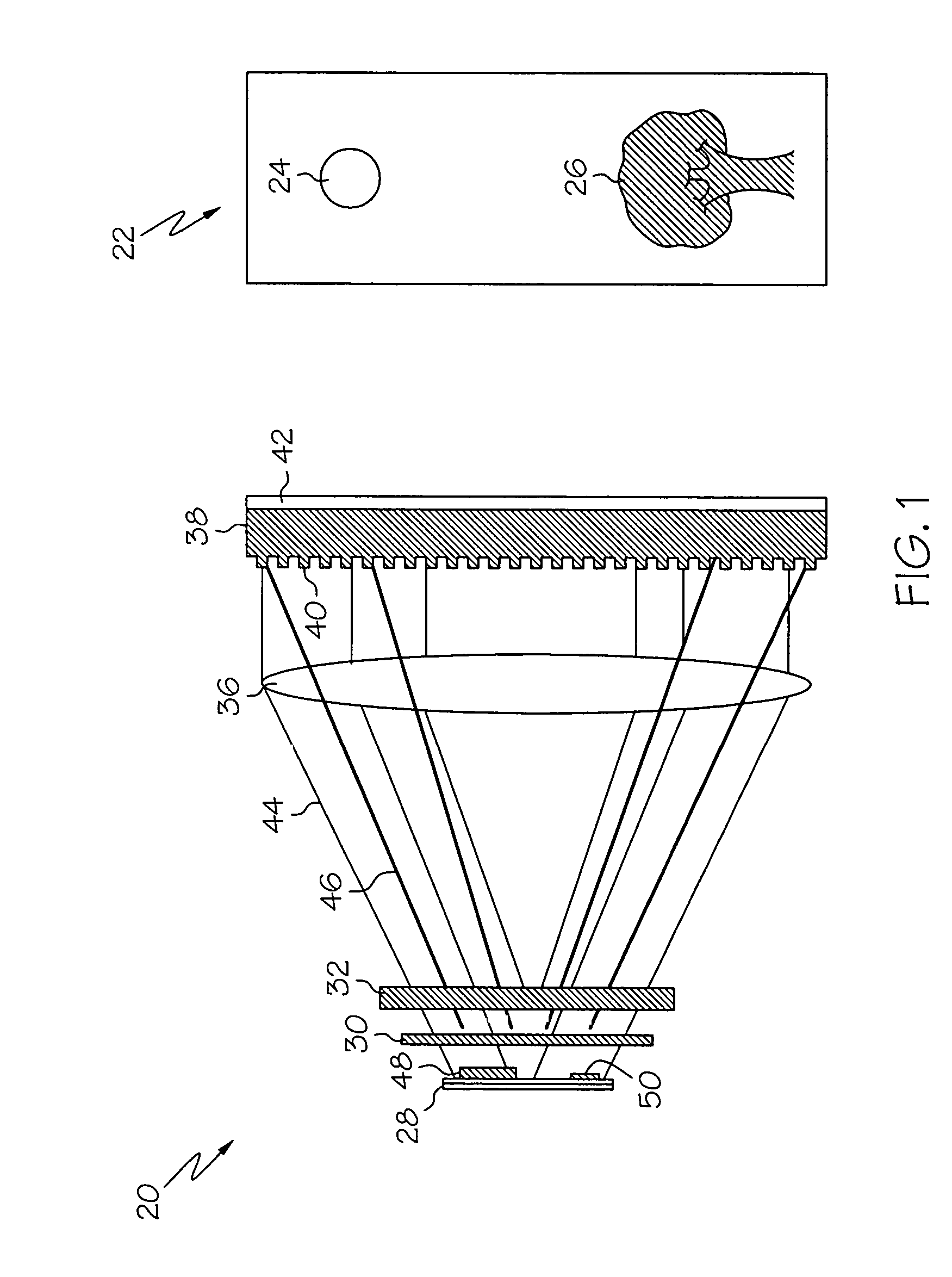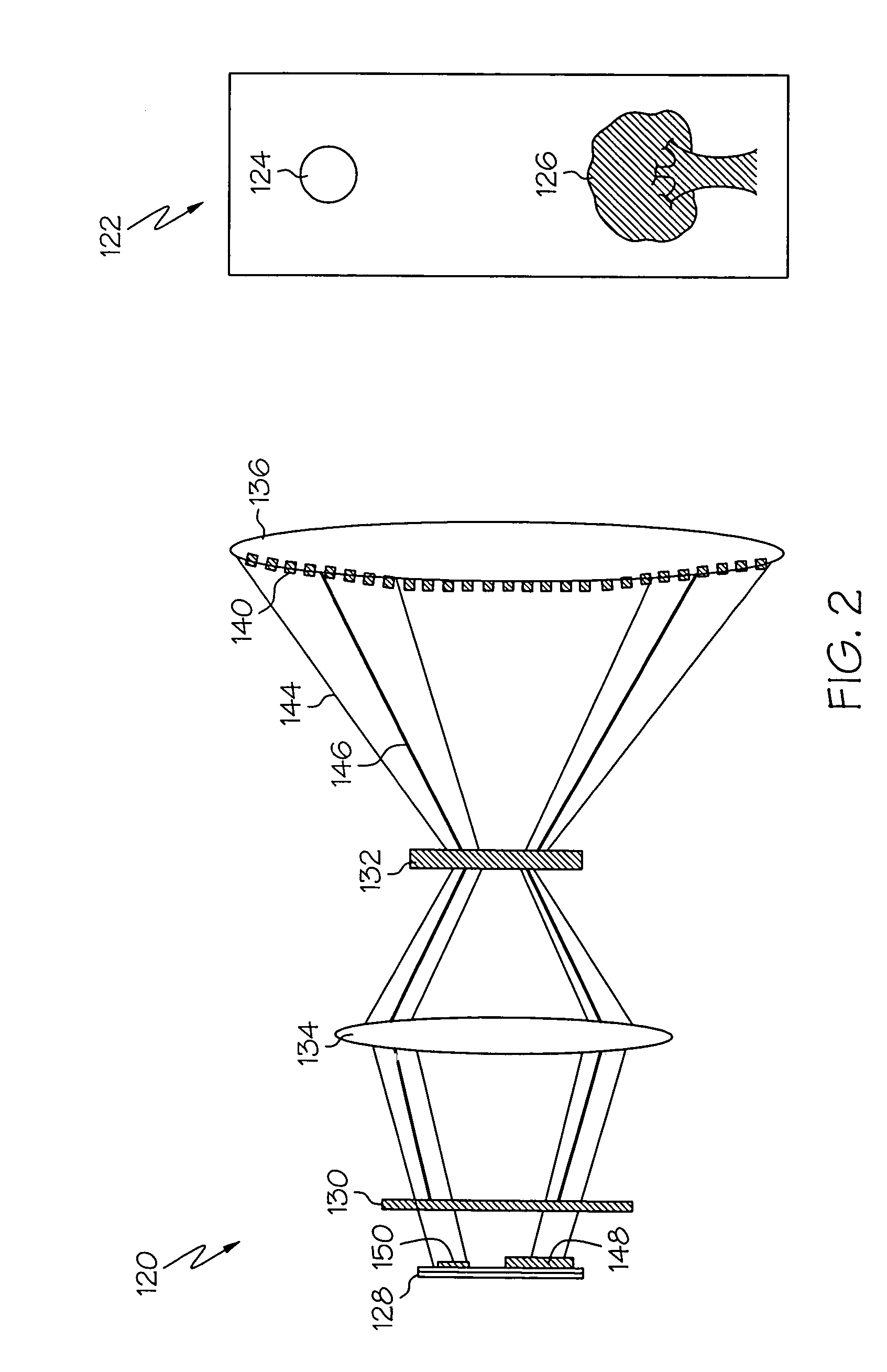Methods and apparatuses for selectively limiting undesired radiation
a technology of undesired radiation and methods, applied in the field of optical systems, can solve the problems of difficult and sometimes impossible for the detector to distinguish objects of interest from undesired radiation, and the difficulty of detecting an aircraft flying near the sun, so as to prevent the spillover of attenuation effects
- Summary
- Abstract
- Description
- Claims
- Application Information
AI Technical Summary
Benefits of technology
Problems solved by technology
Method used
Image
Examples
Embodiment Construction
[0021]The present invention and its operation is hereafter described in detail in connection with the views and examples of FIGS. 1–4, wherein like reference numbers indicate the same or corresponding elements throughout the views. FIG. 1 depicts an exemplary detector assembly 20 in accordance with one embodiment of the present invention. Detector assembly 20 might be suitable for association with a digital camera, a digital microscope, digital binoculars, an infrared thermometer, or any other device suitable to detect light emitted or reflected from a scene. In one embodiment, as depicted by FIG. 1, detector assembly 20 can detect light from scene 22, wherein scene 22 can include the sun 24 and a tree 26. Of course, in other embodiments, scene 22 might include any other devices, objects, or living organisms. For example, scene 22 might involve a person, an airplane, a missile, a vehicle, a building, or any other object capable of emitting or reflecting light.
[0022]Detector assembly...
PUM
 Login to View More
Login to View More Abstract
Description
Claims
Application Information
 Login to View More
Login to View More - R&D
- Intellectual Property
- Life Sciences
- Materials
- Tech Scout
- Unparalleled Data Quality
- Higher Quality Content
- 60% Fewer Hallucinations
Browse by: Latest US Patents, China's latest patents, Technical Efficacy Thesaurus, Application Domain, Technology Topic, Popular Technical Reports.
© 2025 PatSnap. All rights reserved.Legal|Privacy policy|Modern Slavery Act Transparency Statement|Sitemap|About US| Contact US: help@patsnap.com



